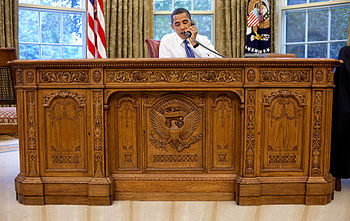Propaganda: Desperately Misquoting Authorities
Appeal to authority is not necessarily a logical fallacy.
It is perfectly in order to present an argument and then bolster it with an accurate reference to an argument or finding by an acknowledged expert on the subject. This is not only done when writing scientific papers. It is a golden thread that binds together the founding principles of common law. Lawyers in common law courts daily cite authorities to bolster their clients' cases. Each opposing lawyer's task is to show that the citation may be distinguished; that it does not provide supportive argument within the particular circumstances of the case at hand.
Appeal to authority is a logical fallacy only if the intention is to stifle further debate.
Appeal to authority goes far beyond mere logical fallacy when the authority is deliberately mis-quoted in support of an argument in the expectation that the 'fact' is so well known that nobody will trouble themselves to check.
I will now give two examples of an authority writing about the Arctic and then show what a propagandist would have his readers believe by deliberately mis-quoting those authorities.
The North West Passage
The first person to navigate the North West Passage entirely by sea was Roald Amundsen, in the vessel Gjøa.

Gjøa
The record of that voyage was written up in the book: "The North West Passage" , being a record of a voyage of exploration of the ship "Gjøa" 1903-1907 by Roald Amundsen with a supplement by First Lieutenant Hansen, Vice-Commander of the expedition.
Both Amundsen and Hansen were acknowledged Arctic experts in their day. Accordingly, anyone who wishes to argue about the state of the Arctic in the earliest years of the 20th century would be well justified in citing Amundsen - provided only that the citation was used entirely within its proper context. I shall return to that topic soon enough.
Roughly 50 years before Amundsen, the Franklin Expedition had sought the North West Passage.
http://en.wikipedia.org/wiki/Franklin%27s_lost_expedition
The Franklin Expedition, comprising the two ships Erebus and Terror, was reprovisioned in Davis Strait by the Barretto Junior. The three years worth of provisions already on board was topped up with more provisions in every available space and on deck. The two ships were last seen by a whaler in Melville bay on July 26 1845. Ever since that date mystery continues to surround the fate of the expedition.
Various searches were mounted for the missing Franklin Expedition. This is not the place to go into any great detail. The only search of direct relevance to my topic is the Fox Expedition. I will, however, divert from my topic to comment on the wonderful way in which humanitarian considerations can sweep aside old enmities.
The Erebus and Terror were both bombs, a type of vessel which had decks specially reinforced to carry mortars for bombardment. That reinforcement, together with further modifications, made the two ships ideal for duty in Arctic ice. The search for the two ships involved many nations. Americans should be rightly proud of their nation's efforts to discover the fate of the two ships. The more so since Terror was one of the ships involved in the bombardment of Fort McHenry, where the Star Spangled Banner could still be seen by the dawn's early light.
One of the British ships involved in the search for the Erebus and Terror was the Resolute. She became trapped in the ice and was abandoned. She was later found drifting by an American whaler, was repaired by Americans and returned to Britain as a goodwill gift. When she was finally withdrawn some of her timbers were used to make a desk which was presented by Queen Victoria to President Rutherford B. Hayes.
If only all nations could bury old enmities so deeply!

The Resolute Desk.
The Fox Expedition
The voyage of the 'Fox' in the Arctic seas : a narrative of the discovery of the fate of Sir John Franklin and his companions"


